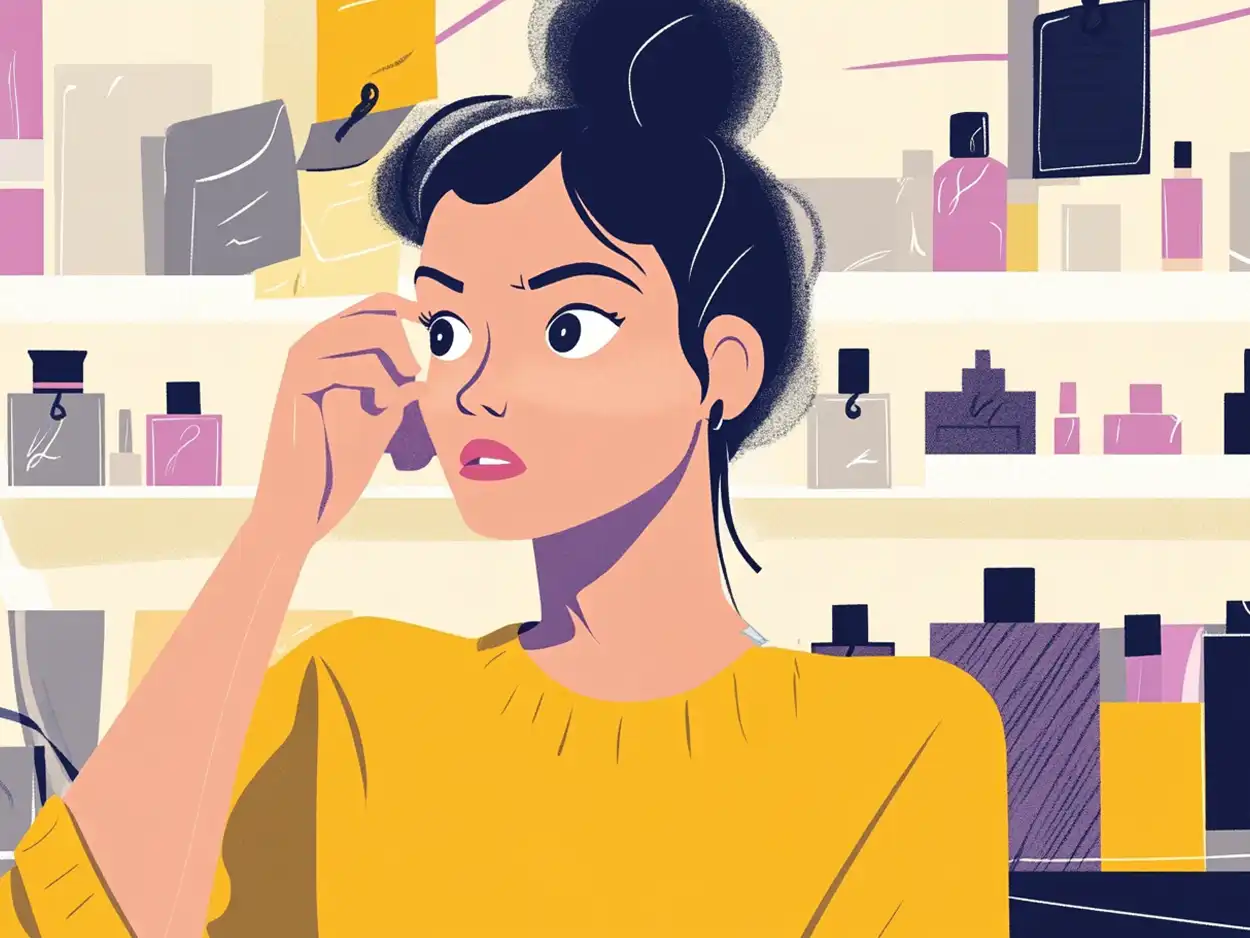The world of perfumes is a captivating blend of artistry, science, and commerce. From affordable body sprays to luxurious fragrances that cost thousands of dollars, the price range in the perfume industry is as diverse as the scents themselves.
This vast spectrum of prices often leaves consumers wondering about the factors that contribute to such variations. What makes one bottle of fragrance significantly more expensive than another? Is it always about quality, or do other elements come into play?
Quality of Ingredients
The ingredients used in a perfume are the foundation of its scent and a major factor in its price. High-quality, natural ingredients often come with a hefty price tag, significantly impacting the final cost of the fragrance.
Natural essential oils, extracted from plants, flowers, and other organic sources, are typically more expensive than synthetic alternatives. These oils are prized for their complexity and depth of scent, as well as their perceived purity and luxury.
Take, for example, jasmine absolute, one of the most expensive floral oils used in perfumery. It can cost upwards of $4,000 per pound. The reason? It takes approximately 8,000 jasmine flowers to produce just one milliliter of essential oil.
Similarly, rose oil, another perfume staple, is incredibly costly. As mentioned earlier, it takes about 10,000 roses to produce 5 ml of rose oil. This labor-intensive process, combined with the sheer volume of flowers needed, drives up the price significantly.
Oud, derived from the resinous heartwood of the aquilaria tree, is often called ‘liquid gold’ in the perfume industry. Its rarity and the time-consuming extraction process make it one of the most expensive perfume ingredients, sometimes costing more than $50,000 per kilogram.
Natural animal-derived ingredients, while controversial and less commonly used today, also contribute to high perfume prices when they are used. Ambergris, a substance produced in the digestive system of sperm whales, can cost up to $20,000 per kilogram. Civet, a musky scent derived from the civet cat, is another expensive animal-based ingredient.
However, it’s important to note that expensive doesn’t always mean better. Synthetic ingredients, while often more affordable, can be of excellent quality and offer consistency that natural ingredients sometimes lack. Some synthetic molecules, like Iso E Super or Ambroxan, are highly valued in modern perfumery for their unique scent profiles and fixative properties.
The development of new synthetic molecules can also be a costly process, involving years of research and testing. Patented synthetic ingredients can drive up the cost of a perfume, especially if they’re newly developed or exclusive to a particular brand.
The concentration of these ingredients also plays a role in pricing. Parfum or extrait de parfum, the most concentrated form of fragrance, contains 20-30% aromatic compounds and is typically the most expensive. Eau de parfum (15-20% concentration) and eau de toilette (5-15% concentration) follow, with eau de cologne (2-4% concentration) usually being the least expensive.
Lastly, the sourcing of ingredients can impact price. Some luxury brands maintain their own flower fields or have exclusive contracts with specific producers to ensure the quality and uniqueness of their ingredients. While this can result in superior raw materials, it also adds to the overall cost of production.
Brand and Marketing
The power of a brand name in the perfume industry cannot be underestimated. Established luxury brands often command higher prices for their fragrances, regardless of the actual production costs.
This premium pricing is partly due to the perceived value associated with these brands. Consumers are often willing to pay more for a fragrance from a prestigious fashion house or a renowned perfumer, believing it to be of higher quality or more exclusive.
Marketing also plays a significant role in perfume pricing. Brands invest heavily in advertising campaigns, celebrity endorsements, and elaborate packaging to create an aura of luxury and desirability around their fragrances.
These marketing efforts can be extremely costly. For example, a single TV commercial for a high-end perfume can cost millions to produce and air. These expenses are ultimately factored into the retail price of the perfume.
Brand reputation also allows companies to maintain higher profit margins. A well-known brand might be able to charge $100 for a bottle of perfume that costs $5 to produce, while a lesser-known brand might only be able to charge $30 for a similar product.
Production and Packaging
The production process and packaging of perfumes significantly influence their final price. Traditional perfume-making methods, often passed down through generations, can be labor-intensive and time-consuming, leading to higher costs.
For instance, the maceration process, where ingredients are left to steep in alcohol for weeks or even months, requires patience and expertise. This method, while expensive, is often preferred for creating complex, high-quality fragrances.
Modern production techniques, while generally more efficient, can also be costly if they involve advanced technology or patented processes. Some luxury brands even maintain their own flower fields to ensure the quality and exclusivity of their ingredients, adding to the overall production costs.
Packaging plays a crucial role in a perfume’s perceived value and price. High-end fragrances often come in elaborate bottles designed by famous artists or designers. These bottles can be works of art in themselves, made from fine materials like crystal or adorned with precious metals and gems.
For example, the limited edition “DKNY Golden Delicious Million Dollar Fragrance Bottle” was crafted from 14-karat yellow and white gold, and adorned with 2,909 precious stones. While this is an extreme example, it illustrates how packaging can significantly impact a perfume’s price.
Exclusivity and Scarcity
In the world of perfumes, rarity often equates to higher prices. Limited edition fragrances, produced in small quantities, can command premium prices due to their exclusivity.
Brands frequently create these limited runs to generate buzz and appeal to collectors. The scarcity of such fragrances drives up their value, as consumers are willing to pay more for something that few others will have.
Vintage perfumes also fall into this category of scarcity-driven pricing. As formulations change over time due to ingredient availability or regulatory changes, original versions of classic fragrances become increasingly rare. Collectors and enthusiasts often pay high prices for these vintage scents, viewing them as irreplaceable pieces of fragrance history.
Some brands create artificial scarcity by limiting production or distribution of their fragrances. This strategy, while controversial, can be effective in maintaining high prices and an aura of exclusivity around a brand.
Bespoke fragrances represent the pinnacle of exclusivity in the perfume world. These custom-made scents, created for individual clients, can cost tens of thousands of dollars. The price reflects not just the ingredients and time involved, but also the uniqueness of having a fragrance that no one else in the world possesses.
Is Expensive Parfum Ever Worth the Price?
The question of whether a perfume is “worth” its high price tag is subjective and often debated among fragrance enthusiasts. On one hand, the cost of ingredients, craftsmanship, and exclusivity can justify higher prices to some extent.
Luxury perfumes often use rare, high-quality ingredients and are created by master perfumers with years of expertise. The artistry and time involved in developing a complex, well-balanced fragrance can be significant.
However, it’s important to recognize that a large portion of a luxury perfume’s price often goes towards marketing, brand prestige, and profit margins. A $300 perfume doesn’t necessarily contain six times the quality or quantity of ingredients as a $50 perfume.
For many consumers, the value of a perfume extends beyond its scent. The feeling of luxury, the boost in confidence, and the association with a beloved brand can make a high-priced fragrance feel “worth it” to the wearer.
Ultimately, the worth of a perfume comes down to personal preference and financial comfort. While some may find joy and value in a $500 bottle of fragrance, others might achieve the same satisfaction from a $50 option. The key is to find a scent that brings pleasure and confidence, regardless of its price tag.

